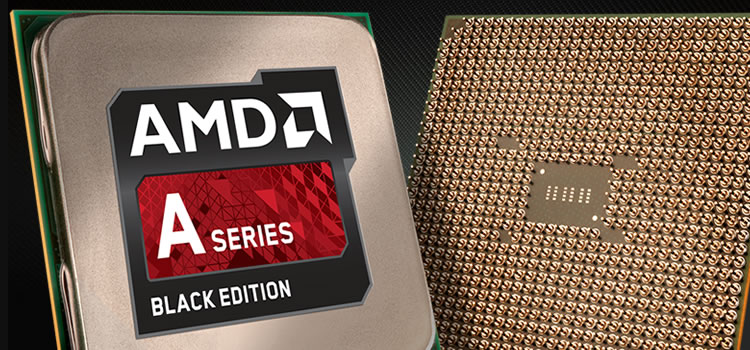Dual Graphics Performance
To test AMD's "Dual Graphics" feature we paired the A10-7850K with the Radeon R7 240 and 250 cards in Crossfire. We also tested the discrete solutions on their own to see how much the APU helps and we teamed the R7 250 with the Core i5-4430 to see what you could expect from Intel's side of things.
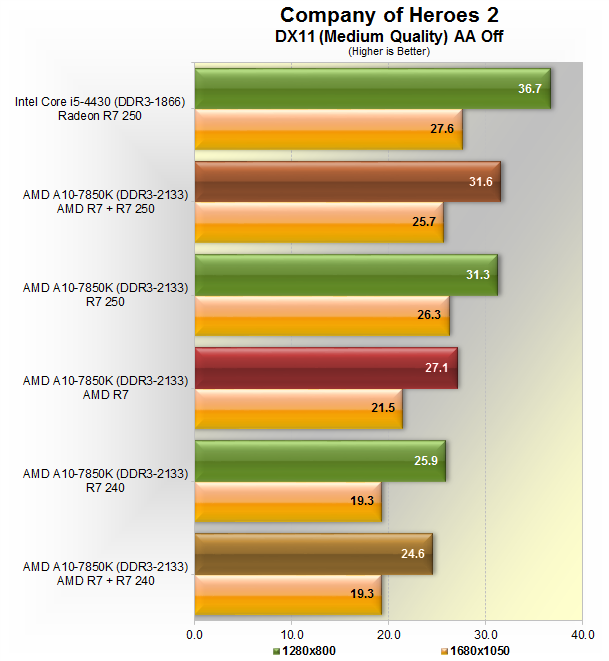
When running Company of Heroes 2 at 1680x1050, the A10-7850K produced an average of 21.5fps on its own – not enough to be playable in our opinion, but still the best results you'll see from an integrated solution today.
Company of Heroes 2 doesn't properly support Crossfire but we included it to show what kind of gains (if any) can be expected from titles without multi-GPU capabilities. Pairing the A10-7850K with the R7 240 actually slowed performance down since the 240 is actually slower than the integrated R7.
However, the R7 250 is faster than the A10-7850K's integrated R7 so we saw an increase in frame rate when looking at the R7 + R7 250 results, even if it's just the R7 250 working. Sticking the R7 250 in the Core i5-4430 system produced the best results at 27.6fps.

The A10-7850K averaged 19.7fps at 1680x1050 in Metro: Last Light, while adding the R7 240 boosted that frame rate to 21.2fps. The R7 240 by itself rendered just 15.9fps.
Adding the R7 250 increased the frame rate to 26fps, while the R7 250 by itself managed 27.1fps so Crossfire was actually slowing down the discrete graphics card.
This time the Intel Core i5-4430 produced virtually the same results as the A10-7850K when using the R7 250.
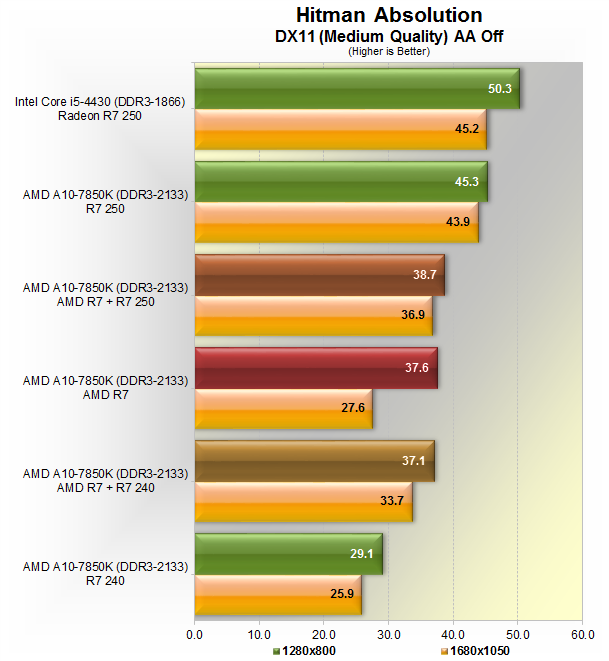
Hitman: Absolution normally supports Crossfire very well, but pairing the integrated R7 with the R7 250 has a negative impact on performance. Granted, using the R7 + R7 250 increased the frame rate to 36.9fps from 27.6fps, but testing the R7 250 without the R7 enabled saw the frame rate jump to 43.9fps. Crossfire with the R7 is actually slowing the R7 250 down.
Strangely, however, this wasn't the case with the R7 240, which went from 25.9fps by itself to 33.7fps with Crossfire enabled.
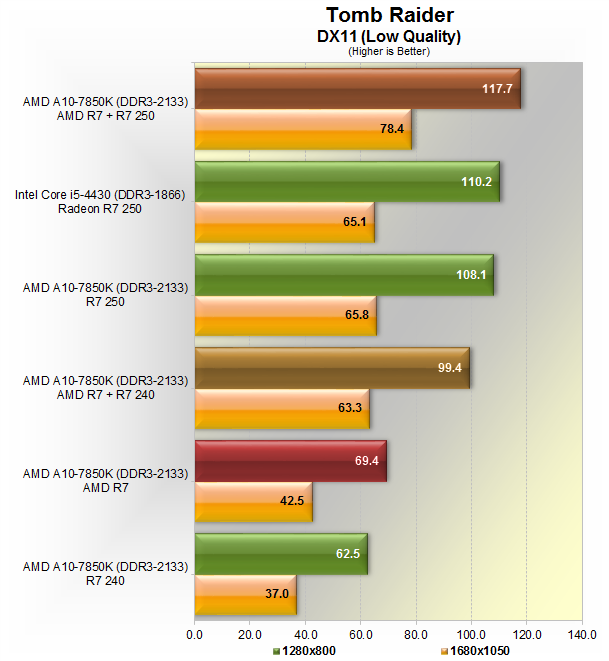
When testing Tomb Raider, the A10-7850K averaged 42.5fps at 1680x1050 and adding the R7 240 increased the frame rate to 63.3fps, a 49% boost and a perfect example of how great things can go when Crossfire is working well. The R7 250 results were good as well, taking the A10-7850K from 42.5fps to 78.4fps, an 84% increase.

BioShock: Infinite is another example of how well things can turn out when Crossfire is working properly. By itself, the A10-7850K averaged just 32fps at 1680x1050, while adding the R7 240 boosted that number by 63% to 52.1fps.
The A10-7850K also became 98% faster when paired with the R7 250, taking the average frame rate to a very playable 63.2fps, 37% more performance than the R7 250 by itself.
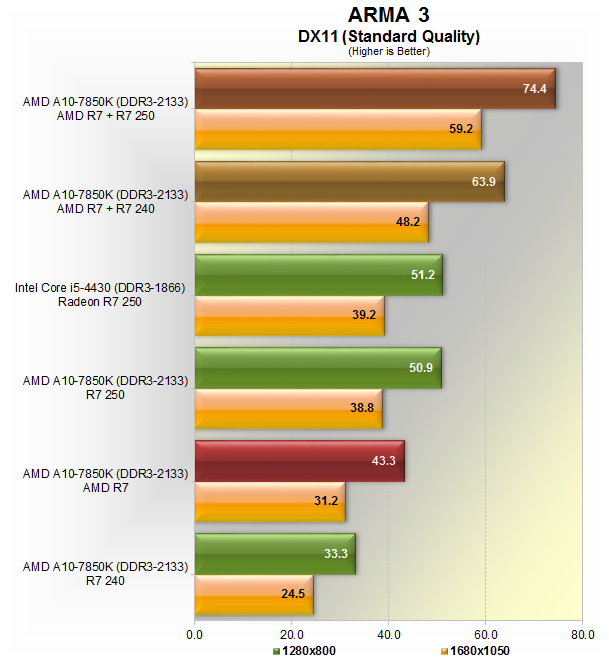
When testing Arma 3 at 1680x1050, the A10-7850K averaged 31.2fps and adding the R7 240 increased that by 55% to 48.2fps, while swapping in the R7 250 improved performance by 90% (59.2fps), which was also a 51% increase over using just the R7 250 alone.
